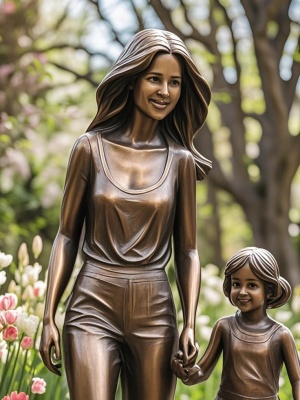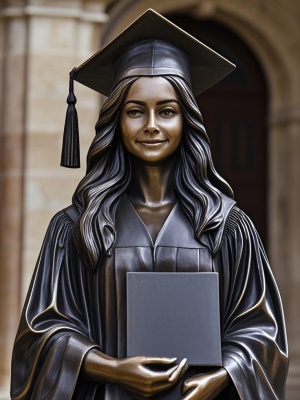The Art of Photographing Sculpture: Capturing Three-Dimensional Beauty
Introduction: The Unique Challenge of Sculpture Photography
Photographing sculpture presents a fascinating challenge for photographers - how to translate three-dimensional artworks into compelling two-dimensional images. Unlike other forms of art photography, sculpture photography requires special attention to lighting, perspective, and composition to faithfully represent the artist's vision while creating visually striking photographs.
The Fundamentals of Sculpture Photography
Understanding Light and Shadow
The interplay of light and shadow defines a sculpture's form. Professional photographers often use directional lighting to emphasize texture and depth. For outdoor sculptures, the golden hours (early morning or late afternoon) provide ideal natural lighting conditions that reveal details without harsh shadows.
Choosing the Right Perspective
Unlike painting photography where frontal shots often suffice, sculpture photography benefits from multiple angles:
- Frontal views to show the overall composition
- Three-quarter angles to reveal depth
- Close-up details highlighting textures
- Wide shots showing the sculpture in its environment
Technical Considerations
Equipment Selection
The right gear makes a significant difference in sculpture photography:
- A DSLR or mirrorless camera with manual controls
- A tripod for stability and precise framing
- A polarizing filter to reduce glare on shiny surfaces
- Multiple lenses (wide-angle for environmental shots, macro for details)
Camera Settings
Optimal settings vary but generally include:

- Low ISO (100-400) for minimal noise
- Moderate aperture (f/8-f/11) for depth of field
- Slow shutter speed when using a tripod
- Manual focus for precise control
Creative Approaches to Sculpture Photography
Abstract Interpretations
Beyond documentation, photographers can create artistic interpretations by:
- Focusing on specific elements or textures
- Using unconventional angles
- Incorporating reflections or shadows
- Experimenting with AI-enhanced techniques
Environmental Context
Showing sculptures in their surroundings tells a richer story. For museum pieces, include subtle context clues; for public art, capture the interaction with people and urban landscapes.
Post-Processing Techniques
Modern editing tools allow photographers to enhance sculpture images while maintaining authenticity:
- Adjusting contrast to emphasize form
- Removing distracting background elements
- Enhancing texture details
- Converting to black and white for dramatic effect
For damaged or historical pieces, AI photo restoration techniques can help reconstruct missing elements digitally.
Conclusion: The Art of Seeing in Three Dimensions
Sculpture photography bridges the gap between art forms, requiring technical skill and artistic vision. Whether documenting museum collections or creating interpretive works, photographers must respect the original artwork while bringing their unique perspective. With practice and attention to the principles outlined here, photographers can create stunning images that do justice to three-dimensional masterpieces.

For more photography techniques and inspiration, visit our blog where we explore various aspects of art and photography.